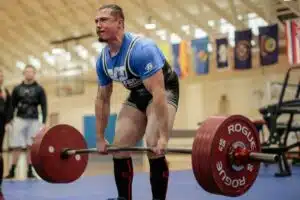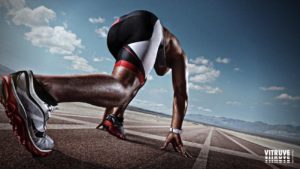Whether you’re a high-performance athlete or just started training in the gym, we’ve all heard the terms flexibility and mobility at some point. Surely in your first physical education classes at school you will possibly perform simple flexibility tests such as trying to touch the tips of your toes and compete to see who was more flexible. Maybe you’ve come into contact with the term mobility recently because it seems to be the only solution to uncomfortable squats or the impossibility of a shoulder press with full range. At first glance these two terms are often mixed and confused.
In today’s post we want to focus not only on understanding each definition by itself but also the main differences in the training of each one.
What is the mobility and flexibility?
Flexibility is the ability of a muscle or groups of muscles to passively elongate. during a movement. It focuses mainly on the muscle group with a training mainly for time, 2-5 minutes, holding the same position while the muscles relax thanks to body weight or with some type of external help and manages to reach a deep elongation.
Mobility is by definition the ability of a joint to move actively throughout the travel range. Not only is it affected by muscle structures, but mobility performance is also the sum of structural factors such as the health and movement capacity of a joint. So, mobility requires greater work of the nervous system unlike flexibility, more focused simply on muscle spindle.
Is flexibility training really necessary and good for athletic performance?
Research has focused primarily on this response. We could say it’s a 50-50. But overall, there are very few studies that show that flexibility is actually necessary for good overall health and to improve both technical movements and overall performance. In fact, flexibility in itself does not provide any outstanding benefit but is linked to an improvement in joint mobility or gain in strength.
What should I do before training? Should I stretch?
It may vary depending on the goal of your session, but generally speaking we would not recommend passive stretching. For example, a lower body strength session with squats and death weight could include:
- General aerobic warm-up (5′)
- Dynamic kicks back and forth (10-12 repetitions)
- Dynamic sidekicks (10-12 repetitions)
- From sitting with your feet resting moving your knees back and forth (Windmill)
- Squats with down tempo
- Jump squats
- Spine rotation (scorpion) (5-7 repetitions)
- Arm circles with pike (10-12 repetitions each way)
Conclusion
Although a flexibility session may seem very productive, the results will be temporary and will contribute little or decrease the performance of the session. While including a part of the session dedicated to active mobilization may not bring many benefits at the time, but over time it will be much more beneficial and effective for the performance and overall health of the athlete.











